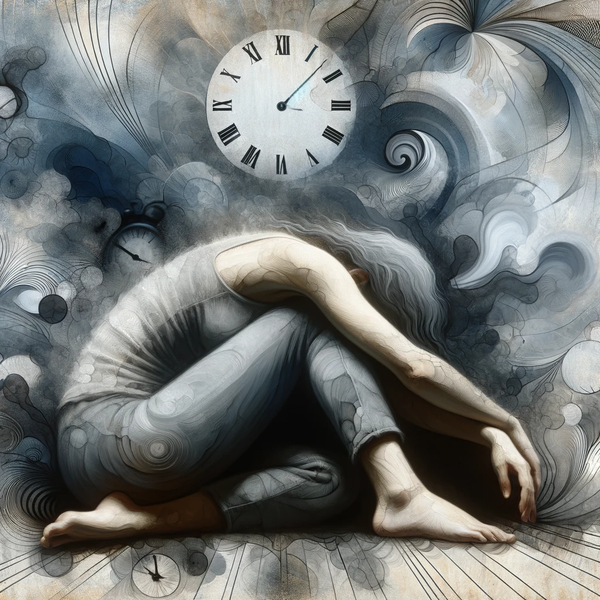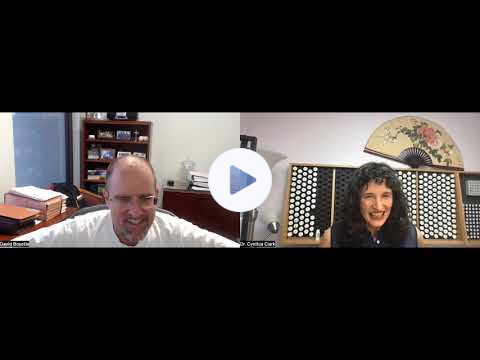Wow! I’ve been looking forward to creating this newsletter for you for months. If you’re like most people, you probably think of something like this when you hear the word Ultraman.
This is about a real live HUMAN Ultraman, though! Today I get to share with you an interview I recently did with Ultraman Finisher David Boyette! Keep reading to see his interview!
Most of the people that come to me are interested in leveling up their health in some way: regaining mobility from ankle or knee or shoulder pain, regaining digestive functioning, energy levels, brain functioning, and the like.
Their “why’s” range from wanting to be around and physically capable for their kids or grandkids, to wanting to become physically active again, to just wanting to enjoy life.
I’m on that same journey myself. When I started my clinic back in 2012, although I was super excited about what I was getting to do in life, and I was super healthy about the way I ate – my week revolved around meeting the organic farmer’s market guy at noon Friday’s in downtown Tampa – I was exhausted. I was taking 1-2 naps a day, and jogging for a mile would deplete me for days.
What changed my life:
Fortunately – and that’s a really big FORTUNE – the training that I went through on Superbowl Sunday in 2012 was a game-changer for me. As a result of that class, in 2 days I started feeling like myself again. In less than 2 weeks I was able to exercise and move again. That journey has continued for the past 12 years, each year working my way stronger and healthier, and last year I completed two Ironman races – while downsizing my clinic to no support staff, and moving my clinic.
During that journey, I’ve met some amazing athletes along the way. I’ve always looked up to them. I did do two Ironmans – AND there are people that do an Ironman in literally half the time it takes me to do one! And there are people that do other crazy things, like run 100 miles in the woods, or do a 3 day “Ultraman,” which I’ll come to in a minute.
Here are some things I’ve learned from these elite athletes:
- The biggest lesson: EVERYONE has STUFF. That guy I think is mind blowing because he biked across South Africa? He is even more so, because he had numb fingers and toes due to pinched nerves most of the trek. Oh, and his shoes BROKE and he had to MacGyver them together with duct tape and chewing gum (something like that) to make it through.
- It is not easy for them. They are not paid athletes – they’re regular folks with full time jobs and misbehaving kids and parents that have strokes. There’s no magic wand that grants peace in life just because they signed up for an Ironman or a 100 mile race. There’s no magic pill that makes you go, YES!!!! I WANT TO GET UP AT 4 AM TO GET THIS 2 HOUR RUN IN BEFORE WORK! They feel great AFTER, not before.
- They all say they do this because they like who they are as human beings better when they’re training.
- FInally, every one of them, when I get to the question of, “Why do you do this? Why endurance cardio specifically, the answer always boils down to “it’s hard to describe, but it’s spiritual.”
I know that feeling very well. It’s why I do it, too.
KEEP READING FOR THE ULTRAMAN INTERVIEW!
Let’s talk about the science of exercise, and what changes when you do it. As a Certified Personal Trainer while I was going through graduate school, I LOVED coaching people to activate their bodies. I learned that the smarter a person is, the more mental gymnastics they have to do to convince themselves to exercise! I did a lot of research about exactly what the benefits of exercise are, because weirdly, it can be very hard to convince ourselves to MOVE when we haven’t been.
Why are we happier and more fulfilled when we exercise? The Psychoneurobio components.
1. Endorphins
- Effect: Often referred to as the body’s natural painkillers, endorphins are peptides that help to alleviate pain and induce feelings of euphoria. During prolonged endurance training and competition, the body increases endorphin production to help manage discomfort and pain, which can contribute to the so-called “runner’s high,” a state of euphoria combined with reduced anxiety and a lessened ability to feel pain.
- Mechanism: Physical exertion stimulates the production of endorphins by the central nervous system and the pituitary gland. These molecules bind to opioid receptors in the brain, reducing the perception of pain and promoting a sense of well-being. Everyone likes being around someone that feels good versus someone that’s in pain!
2. Dopamine
- Effect: Dopamine is a neurotransmitter associated with pleasure, motivation, and reward. Training for and competing in ultramarathons can lead to increased dopamine release, enhancing motivation, focus, and determination—key components for endurance athletes.
- Mechanism: The anticipation and achievement of reaching milestones (like finishing a long training session or crossing the finish line) stimulate the reward pathways in the brain, leading to the release of dopamine. This shifts the brain to a “Yes, I can!” attitude.
3. Cortisol
- Effect: Cortisol, often dubbed the stress hormone, is produced in higher quantities during both physical and psychological stress. While it is crucial for managing stress and mobilizing energy, prolonged elevated levels due to long-term training and competition can suppress the immune system and contribute to fatigue.
- Mechanism: Cortisol is released by the adrenal glands in response to ACTH (adrenocorticotropic hormone), which is secreted by the pituitary gland as a response to stress. It plays a role in glucose metabolism, inflammation reduction, and maintaining fluid balance. This is the “Get it done!” vibe that we all need sometimes.
4. Serotonin
- Effect: This neurotransmitter contributes to feelings of happiness and well-being. Physical activity can boost serotonin levels, helping to improve mood and combat stress.
- Mechanism: Exercise increases the rate and frequency at which serotonin is fired in the brain, enhancing mood and overall sense of happiness. It also boosts the levels of tryptophan in the brain, which is a precursor to serotonin. This is the feel-good brain juice we find when we meditate properly. When we exercise, it’s easier to feel good.
5. Brain-Derived Neurotrophic Factor (BDNF)
- Effect: BDNF supports the survival of existing neurons and encourages the growth and differentiation of new neurons and synapses. High-intensity exercise, like endurance training, can increase BDNF levels, which may improve cognitive functions and brain health.
- Mechanism: Physical activity stimulates the production of BDNF, which plays a key role in neuroplasticity, helping the brain to adapt to new challenges, learn, and remember. Exercise makes you smarter!
You made it to the Ultraman Interview!!!!
David Boyette is a Sarasota lawyer who has been doing long distance cardio for about 12 years. He has an amazing story about his start – never having been much of an athlete in high school, he was referring a soccer game one day and noticed he was getting out breath running down the field. He decided to add in some running to get in better shape. The first day he literally made it as far as the first mailbox from his house – he had to walk back from that mailbox. The second day, he went a little further. Twelve years later – he completed one of the most challenging endurance races in the world. He was 59 at the time he completed it in February 2024, and he was the oldest gentleman in the race. AND – he came in 17th of 45 contestants!
David is also a supremely kind human being, and it was an honor to have this interview with him.






